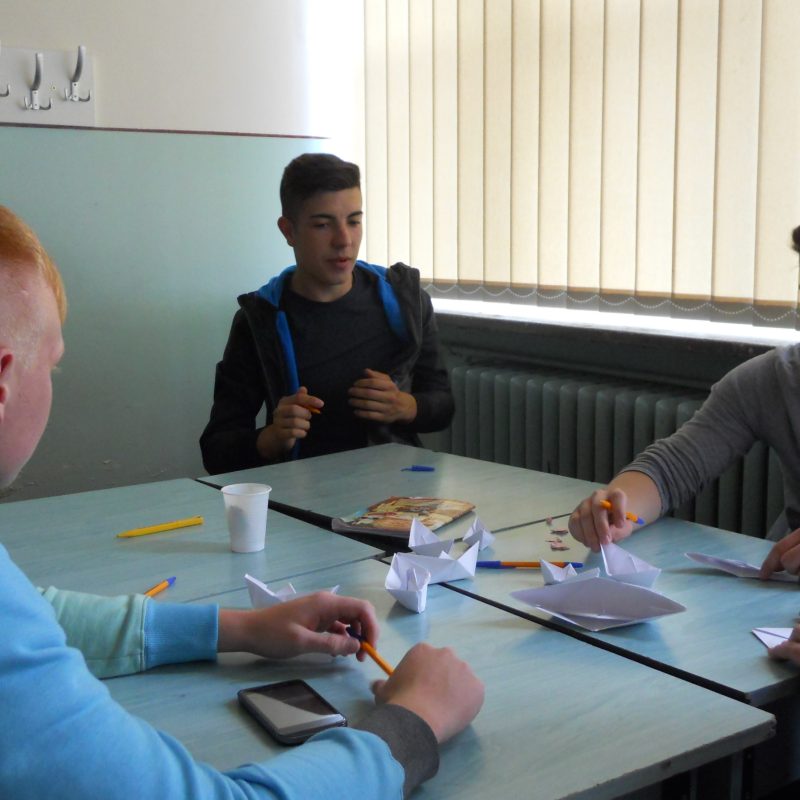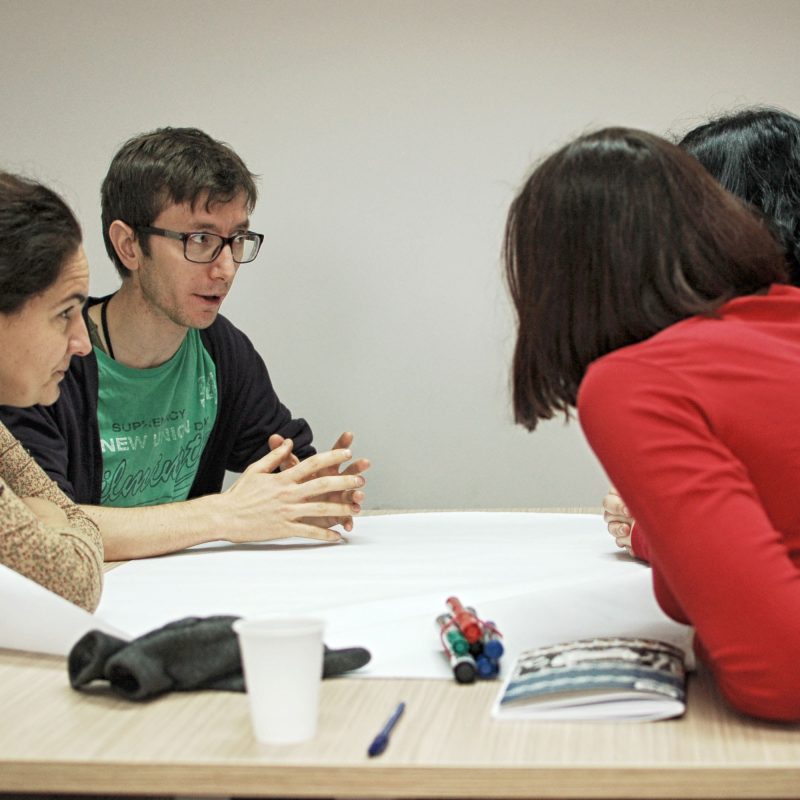
Start your business with a paper clip
April 25, 2016
Launch your boats!
April 25, 2016Think twice before you answer
Use this scenario to teach young people about the importance of critical thinking.
When to use it:
- understanding the importance of critical thinking
- practicing critical thinking
Size of the group: 5 to 20 people
Age of the group: over 14 years old
Time:
Preparation: 30 min.
Presentation: 1 hour
Materials:
- printed handouts with the questions from steps 1. and 2.
- pens
- flipchart papers
- markers
How:
Preparation:
- Print out the questions from steps 1. and 2.
- Read about critical thinking here.
- Prepare the flip-chart paper with the statements from step 4.
Presentation:
- Start the exercise with a short game. Give each participant the handout with the following questions and ask them to respond to these in 3 minutes:
- How do you put a giraffe in a refrigerator?
- How do you put an elephant in a refrigerator?
- The Lion King is hosting an animal conference. All the animals attend – except one. Which animal does not attend?
- There is a river you must cross but it is used by crocodiles and you do not have a boat. How do you manage it?
Now, the correct answers are:
- Open the refrigerator, put in the giraffe, and close the door. This question tests whether participants tend to do simple things in an overly complicated way.
- Open the refrigerator, take out the giraffe, put in the elephant and close the door. This tests the participants’ ability to think through the repercussions of your previous actions.
- The elephant. The elephant is in the refrigerator. This tests participants’ memory.
- You jump into the river and swim across. All the crocodiles are attending the animal conference. This tests whether the participants learn quickly from their mistakes.
- Split the participants in groups of five people, and tell them the next story adapted from http://www.about.com/education/:
You were assigned to conduct a tour of aliens who are visiting our planet and are interested in observing human life. At one moment, you fly with them over a Stadium where two teams are playing soccer. Try to answer the following questions for the aliens:
- What is a game?
- Why are there no female players?
- Why do people get so passionate watching other people play games?
- What is a team?
- Why can’t the people in the seats just go down on the field and join in?
- Each group presents quickly their answers, and then debrief the session by explaining that we all carry around certain assumptions and values. For instance, in some communities, people will not accept the idea of women playing soccer, while in others, they will accept it, and probably the participants explain to the aliens that women are also playing soccer, but not at the same time with the men, maybe because of differences in sports skills etc. Try challenge the participants with more questions while they are presenting, helping them to think in more depth about their answers.
- Use the flip-chart paper with facts versus opinions, and ask participant to decide quickly on the statements and tell you which are facts, and which are opinions. Read statements one by one, and interact with the group. The statements, adapted from http://www.about.com/education/, are the following:
- My mom is the best mom on earth.
- My dad is taller than your dad.
- My telephone number is difficult to memorize.
- The deepest part of the ocean is almost 11.000 meters deep.
- Dogs make better pets than cats.
- Smoking is bad for your health.
- 85% of all cases of lung cancer are caused by smoking.
- The size of a soccer ball is roughly 22 cm in diameter
- Playing soccer is fun.
- China is the country with the largest population on Earth.
- According to a perception study, two out of ten European citizens are boring.
- Debrief the session explaining to the participants the importance of making the difference between facts and opinions, when talking with people, when making presentations, but also when opening a business – when is even more crucial to know facts about the market, about the customers, about competition, etc.
Follow-up questions:
- How do you think critical thinking could help you in your future career? Challenge participants to talk about their assumptions, about how they should increase their scepticism, understand all the alternative they have (from facts), and also understand how different options / decisions could influence others.
Possible variations:
For steps 2. and 4., you can use a different story and different statements (facts and opinions).
Other resources:
Play from the Unlock Social Enterprise game the module 1 dedicated on critical thinking:
How to Improve Your Critical Thinking Skills and Make Better Business Decisions
You must be logged in to post a review.
Related products
-
Launch your boats!
Use this scenario to help young people understand how production, sales and market are connected, and how market, customers and competition influence one’s business.
-
How much money do you need?
Use this scenario to help young people to gain the basic knowledge on personal budgeting and financial education.
-
Lead your organization with style
Use this scenario to help young people learn about and practice different leadership styles.





Reviews
There are no reviews yet.